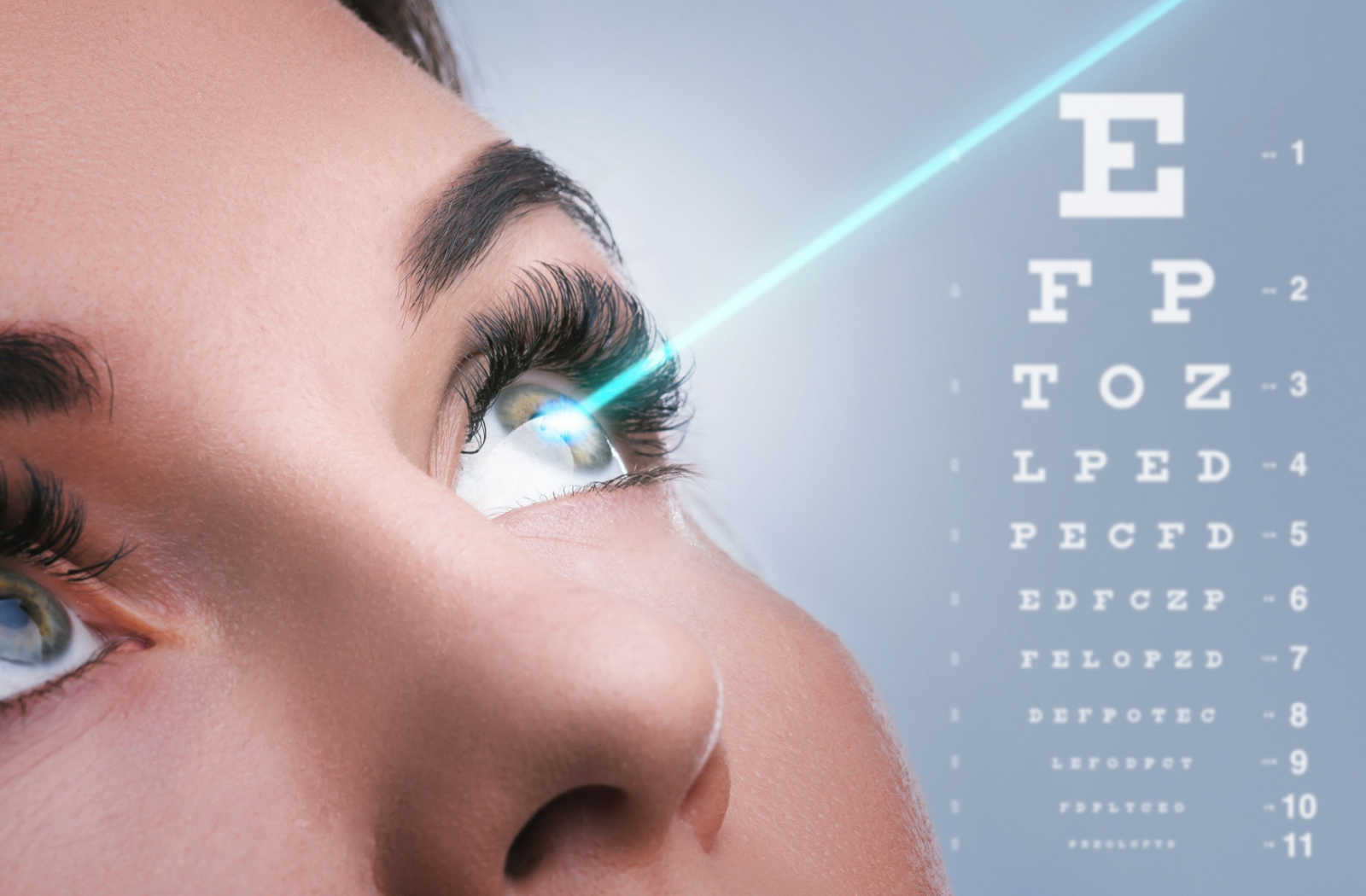
Most people think LASIK is only for one vision problem, not multiple at once. They often associate it only with nearsightedness. But the truth is, LASIK can treat more than one refractive error. The procedure reshapes the cornea using a laser, adjusting how light enters the eye. Whether you’re nearsighted, farsighted, or have astigmatism, the principle remains the same. Light must focus directly on the retina, not in front or behind it. Surgeons use corneal mapping to customize treatment based on where the eye’s curve needs correction. That’s how LASIK targets very different problems using the same approach.
Nearsighted patients need the cornea flattened while farsighted patients need it more steeply curved
Nearsighted patients need the cornea flattened while farsighted patients need it more steeply curved. LASIK achieves both with careful laser sculpting. In myopia, light focuses in front of the retina. Flattening the cornea pushes the focal point backward. In hyperopia, light lands behind the retina. Steepening the cornea pulls the light forward. The laser does this by removing precise corneal tissue layers. The correction depth depends on how strong the prescription is. That’s why LASIK is adjusted differently for each eye, sometimes treating opposite issues. It’s not about using one technique for all, but adapting it to what’s missing.
Some patients have one eye nearsighted and the other farsighted from previous surgeries or aging
Some patients have one eye nearsighted and the other farsighted from previous surgeries or aging. This condition is called anisometropia. It makes both near and far vision difficult to balance. Glasses may work poorly because the eyes need different focal distances. LASIK can address each eye independently during the same session. One eye is reshaped for reading, the other for distance. This is known as monovision LASIK. While it doesn’t suit everyone, it reduces dependence on glasses for many. Surgeons test monovision simulation with contact lenses first to ensure comfort. LASIK then makes those results permanent.
LASIK can also correct astigmatism, which often coexists with nearsightedness or farsightedness
LASIK can also correct astigmatism, which often coexists with nearsightedness or farsightedness. Astigmatism means the cornea isn’t perfectly round. It causes blurred or stretched vision at all distances. LASIK smooths the uneven surface to create a more symmetrical shape. This improves clarity and focus. Most modern lasers treat astigmatism during the same session as other errors. The key is advanced imaging and customized programming. Astigmatism doesn’t prevent LASIK eligibility in most cases. In fact, combining treatments can improve quality of life more than correcting only one issue.
Age matters because LASIK can’t prevent presbyopia, the loss of near focus after forty
Age matters because LASIK can’t prevent presbyopia, the loss of near focus after forty. Even if nearsightedness or farsightedness is corrected, reading glasses may still become necessary. Presbyopia happens when the eye’s lens becomes less flexible with age. LASIK reshapes the cornea but doesn’t affect the lens. This means vision is clear at a fixed range but may still blur up close. Surgeons often explain this to patients in their forties or beyond. Some people opt for monovision to delay reading glasses. Others combine LASIK with lens replacement later. Knowing this limitation is essential for realistic expectations.
Patients with stable prescriptions for at least a year are usually the best LASIK candidates
Patients with stable prescriptions for at least a year are usually the best LASIK candidates. Fluctuating vision may signal ongoing eye changes, making results less predictable. Both nearsighted and farsighted eyes can shift with time, especially in younger people. That’s why teens and early twenties may be asked to wait. Eye exams track changes before approving surgery. If the prescription hasn’t changed in twelve months, LASIK is considered safer. Stability ensures that laser adjustments won’t become obsolete quickly. It’s not just about correcting now, but making sure results last.
Not every patient qualifies for LASIK due to corneal thickness or underlying eye conditions
Not every patient qualifies for LASIK due to corneal thickness or underlying eye conditions. The laser reshapes the cornea by removing tissue. Thin corneas may not support the reshaping without weakening structure. Eye diseases like keratoconus or dry eye syndrome can also make LASIK riskier. In these cases, alternatives like PRK or lens-based surgery may be better. Pre-operative scans measure the cornea in detail. Surgeons only proceed when safety thresholds are met. The evaluation process is detailed and includes topography, tear testing, and retinal exams. This ensures the right procedure is chosen for each patient’s anatomy.
LASIK outcomes are typically stable long-term, but vision can still change due to unrelated factors
LASIK outcomes are typically stable long-term, but vision can still change due to unrelated factors. Hormonal shifts, trauma, or medical conditions like diabetes may affect eyesight later. LASIK corrects existing refractive errors but doesn’t freeze the eye in time. That’s why follow-up exams matter, even years after surgery. Some patients need enhancements years later, especially if the original correction was high. These touch-ups are smaller and often simpler. Still, they depend on having enough corneal tissue left for further reshaping. Awareness of future possibilities makes it easier to decide if LASIK suits a long-term plan.
Advanced mapping technology allows surgeons to tailor LASIK to very precise and personalized eye data
Advanced mapping technology allows surgeons to tailor LASIK to very precise and personalized eye data. Tools like wavefront analyzers detect even small irregularities in the cornea. This leads to custom ablation patterns that improve clarity and reduce glare. Night vision, halos, and contrast sensitivity also benefit from customized treatment. Nearsighted and farsighted eyes often have different irregularities, making personalization essential. Standard LASIK uses broad templates, but custom LASIK fine-tunes for individual differences. It increases safety and satisfaction for those needing dual corrections. These tools are now standard in most modern clinics.
Recovery is generally quick, but following post-op care is essential to protect both corrected vision types
Recovery is generally quick, but following post-op care is essential to protect both corrected vision types. Most patients resume normal activities within a few days. Light sensitivity, dryness, and glare may appear temporarily. Eye drops, shields, and limited screen use help reduce irritation. Rubbing the eyes can disturb healing and affect the shape of the cornea. This risk applies whether correcting nearsightedness, farsightedness, or both. Follow-up visits ensure the cornea is healing evenly. Any discomfort should be reported early. The first few weeks set the foundation for how permanent and effective the results will be.
